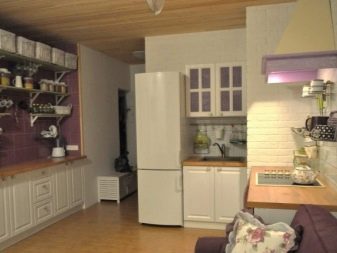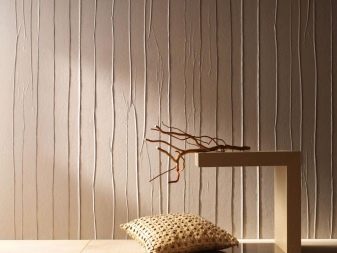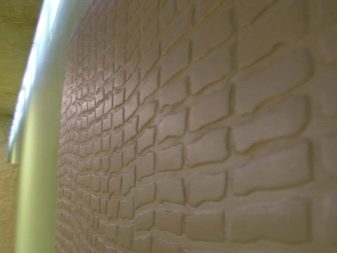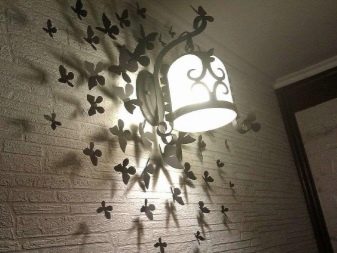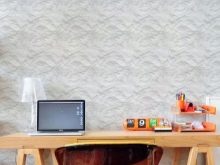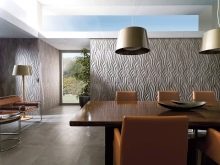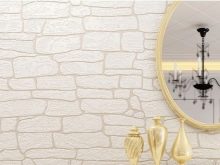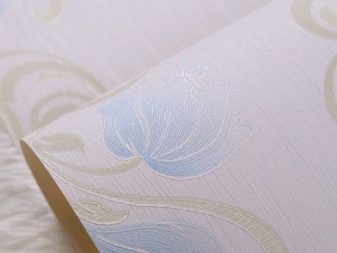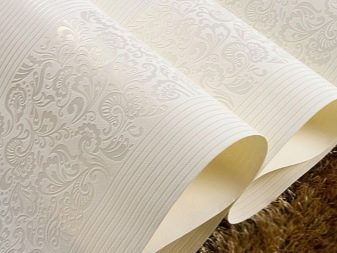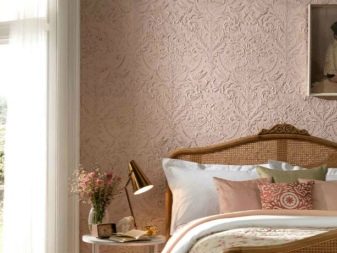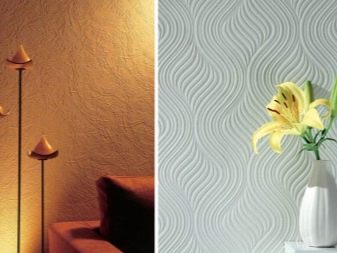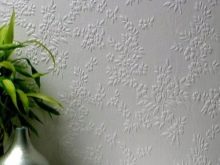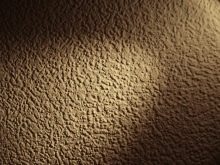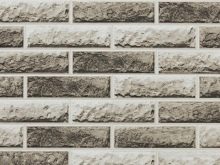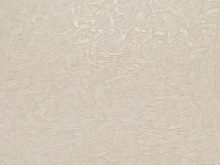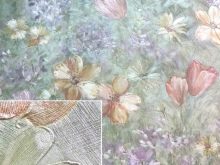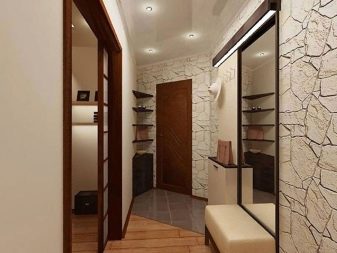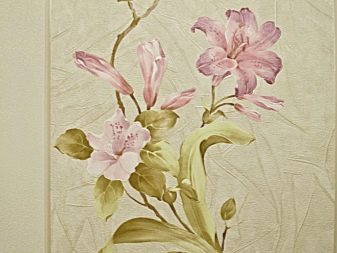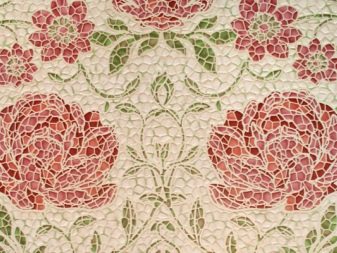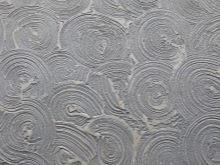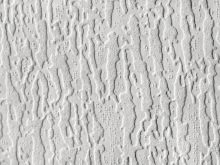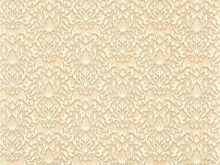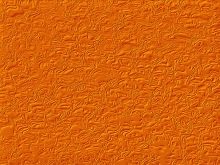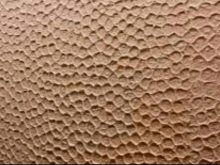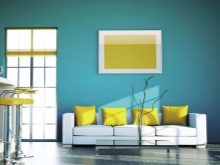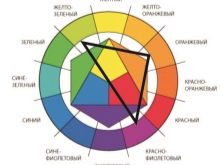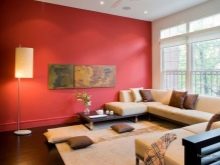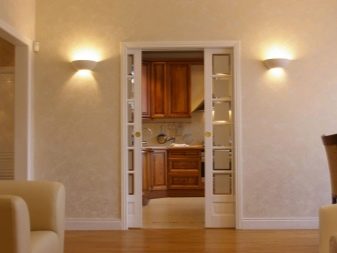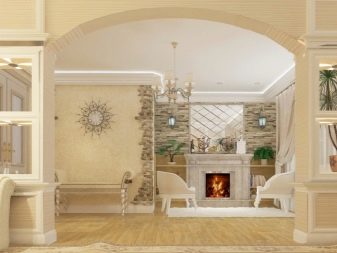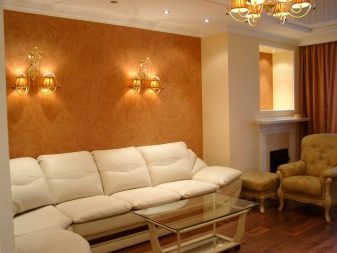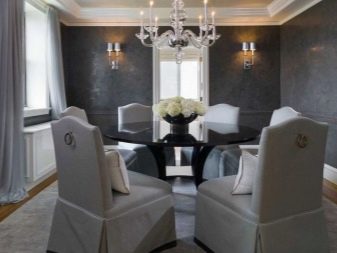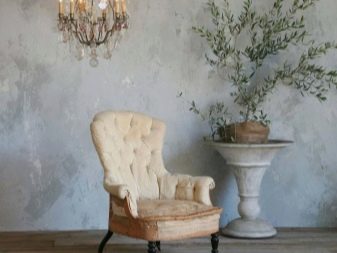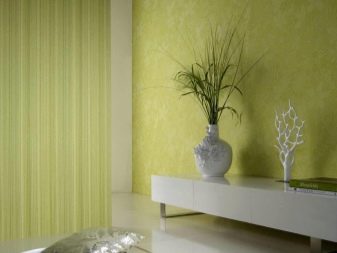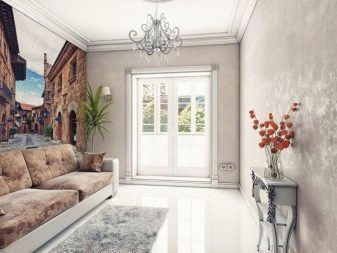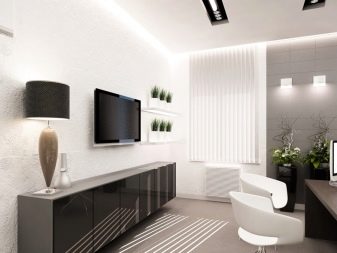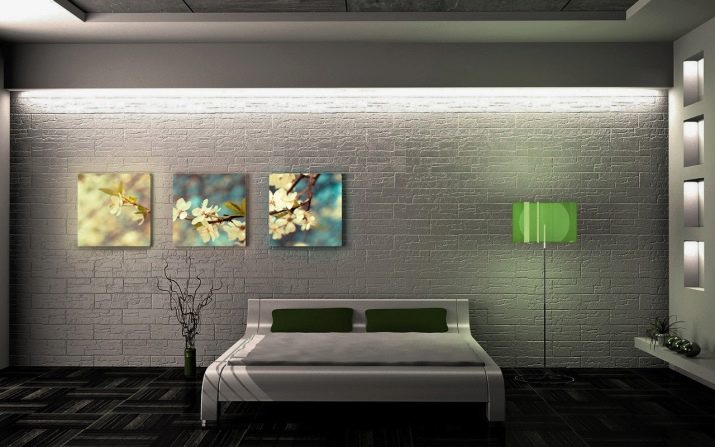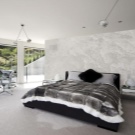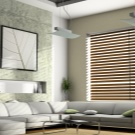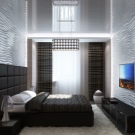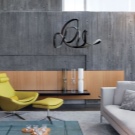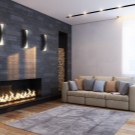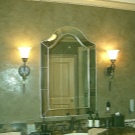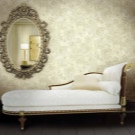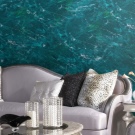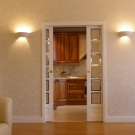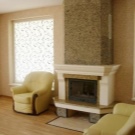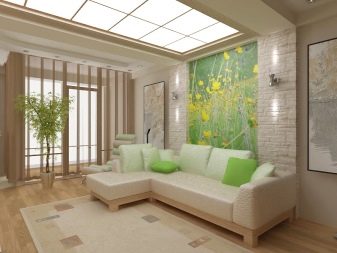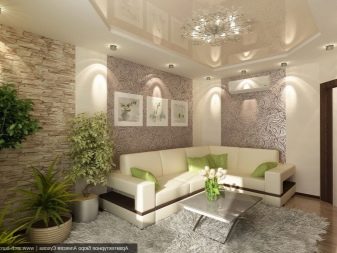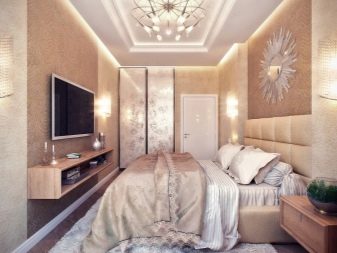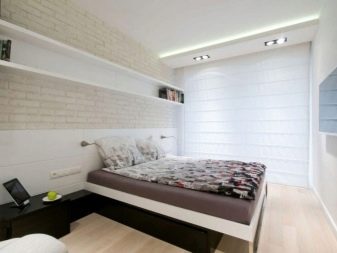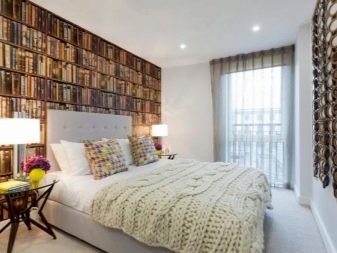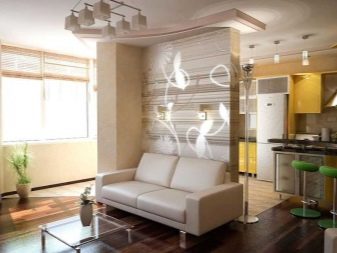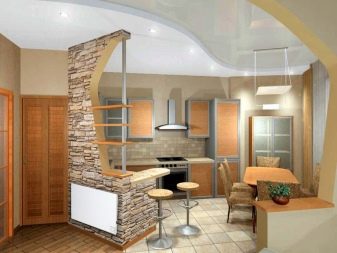Wallpaper with the effect of decorative plaster in the interior
Decorative plaster firmly occupied the leading position among the finishing materials. If earlier it was used only to design the exterior of dwellings, now it has become popular in interior decoration. With its help, they create surfaces of various textures: reliefs, three-dimensional patterns, velvet, leather, wood, and stone. The main disadvantage of this coverage is that you need to know how to work with it and you need to have artistic skills.
Not everyone can afford to invite a professional, so the building materials market offers an alternative in the form of wallpaper with the effect of decorative plaster.
What it is?
Coatings styled as plaster are wallpapers with a pattern imitating textured surface finish. Such imitations are of course found on ordinary paper wallpaper, but they look unnatural. For the credibility of the image must be given volume and relief. Manufacturers achieve this by stamping or spraying.
Advantages and disadvantages
To say unequivocally that the wallpaper with the effect of plaster - this is the most suitable option for all, it would be wrong. It all depends on the purpose of the room to be decorated, on possible external influences on the coating and on the distinctive characteristics of each material.
- The imitator service is limited to fifteen years. This is more than ordinary wallpaper, but if you decide to make a repair and forget about it for 40 years, then it is better to choose natural plaster.
- Mechanical damage is almost not terrible mineral decorative coatings, but the strength of textured wallpaper is also at altitude. In addition, they are warm to the touch, therefore, more suitable for bedrooms and nurseries.
- Imitation of plaster for walls is perfect, if your hobby is a frequent change of interior.Wallpapers are easy to change, while tearing off the plaster is not so easy.
- The cost of purchasing both materials is on average equal. But to work with plaster, you will probably need a master, while on installing wallpaper you can save money by doing everything on your own.
- The practical texture of the wallpaper allows you to hide the joints, and the relief pattern - possible irregularities of the wall.
Composition
The structure of the coating with the effect of plaster two-layer. The basis can be both paper, and non-woven. But the top layer is paper (duplex), polyvinyl chloride (PVC) or acrylic. Vinyl and paper wallpaper embossed structure is given by the method of embossing. The cloths made on this technology, very strong and practically do not stretch when moistened with glue. Textured acrylic wallpaper is achieved by the point of application of the pattern on the basis of foamed acrylic.
Species
The quality characteristics of embossed wallpapers depend on the materials and methods of manufacture. Manufacturers distinguish the following types:
Duplex
Duplex is called paper embossed wallpaper. They were named because of the double paper structure. They are made by wet stamping.Canvases of this type are found with a color image or white for painting. The latter have a more expressive texture, but they can withstand a limited number of stains without deformation.
Among the advantages of this type:
- high strength compared to single-layer paper coatings;
- environmental friendliness;
- air permeability;
- low price
The disadvantages include:
- low service life, on average 5 years;
- paper is easily damaged mechanically;
- cleaning with water is also harmful to the coating.
Vinyl wallpapers
The top decorative layer is PVC, and the base is either paper or non-woven. In hot stamping, the base with foamed PVC is heated and passed through the relief rollers. This method creates three types of wallpaper:
- Flat (compact) vinyl - has a high density and strength, resistant to water. Most often on it reproduce the texture of natural stone, tile, brickwork. Wallpaper of this type is a suitable option for the kitchen, especially if the substrate is non-woven. They can be cleaned with or without detergent, and some varieties even with a brush.
- Heavy Vinyl allows you to achieve a universal coating for walls: durable, moisture-resistant and aesthetic. Plus, the perfect smoothness of the wall is not required.Wallpapers will hide all the bumps and roughness.
- Silk screen create by stamping under the pressure of paper dipped in vinyl. The output is a thin iridescent material with a smooth silky texture. These wallpapers are not of economy class, but give the interior elegance and luxury. The main condition - perfectly smooth walls.
Hot stamping technology wallpapers are durable (from 7 to 15 years depending on conditions), resistant to ultraviolet, moisture, steam and heat. They do not absorb odors and are subject to wet cleaning even with the use of cleaning agents (non-abrasive). They are also positioned as environmentally friendly coatings, since formaldehyde resins evaporate when heated.
The main disadvantage of this material is low air permeability. Therefore, before sticking, you need to take care to apply antifungal primer.
Relief wallpaper chemical embossing is attached using a reagent. It is applied to some areas of the PVC layer in accordance with the future pattern. In the process of heating the reagent suppresses the foaming of vinyl in the treated areas, thereby achieving the desired texture.
Acrylic Wallpaper
Acrylic wallpaper is considered to be a cheap analogue of vinyl. They consist of a substrate of paper or non-woven fabric and sprayed acrylic. Unlike vinyl, acrylic is applied dotted, only in the place of patterns. This maintains the air permeability of the coating. At high temperatures, the points swell, forming a relief pattern.
Acrylic wallpapers are inferior in durability to their vinyl counterparts, as spraying is vulnerable to mechanical effects and moisture.
Non-woven wallpaper
Non-woven wallpaper - a coating made of several layers of non-woven - non-woven cellulose fibers. The top layer, as a rule, has a relief pattern. Most often, these wallpapers are made white for painting, but possible options in color. Both variants are subject to repainting up to 10 times without distortion of the upper decorative layer.
Kinship with the paper put non-woven in a number of safe materials for health, with good air circulation. Another useful feature - this wallpaper is reusable, that is, they can be easily removed and re-glued in another place.
Colors
Wallpaper with the effect of decorative plaster are presented in any color.Therefore, to find options for your project is not difficult. The main thing to remember is that the choice of color depends on its effect on the human psyche and the purpose of the room to be decorated. So, the bright red color in the bedroom is unlikely to help you relax, and the gloomy brown in the nursery will most likely be depressing. But the interiors with one type of wallpaper have long sunk into oblivion. Companion wallpapers help set accents and balance color gamut. Manufacturers offer ready-made combinations of colors and textures for various interiors and styles.
And for those who prefer to choose their own combinations, you need to choose samples that are similar in composition and texture, remember about the “color wheel” and about the effect of colors on a person.
Consider a few classic combinations:
- Beige wallpaper brings peace and tranquility. That is why they are perfect in the bedroom or living room. The combination with dark shades will add severity to the room, while whites and other pastel colors will add light.
- Gold wallpapers seem fanciful and flashy. To extinguish the superfluous intentionality, it is enough to dilute them with calm light tones (beige, light brown).
The combination of these flowers brings thoughts of autumn and sets a romantic mood.
- Brown wallpaper helps to create an expensive and noble, but gloomy style. Most often they are chosen for the design of offices and living rooms. In small rooms it is better to combine them with light wallpaper and take care of sufficient lighting.
- Orange and red colors are vibrant, energetic and disturbing. They stimulate activity, so for sleeping areas they are used carefully, in combination with neutralizing shades. The best application is living rooms, halls, kitchens.
- Blue wallpapers, on the contrary, reduce activity and calm down. It is worth choosing them for spacious rooms as they visually reduce space.
- If the room is small, look at the blue wallpaper. Like blue, they relax and pacify, but do not affect the optical perception of the room. This color is recommended to be used in offices with high conflict.
- Wallpaper green - "pushing" the wall. And the color itself symbolizes confidence and life. The effect of green on a person depends on the shade. Light colors relieve tension and put to sleep, and juicy, on the contrary, induce to action.
- Black and white wallpaper one by one is better not to use in the interior of the apartment. Excess black inhibits, and completely white walls are associated with the sterility of hospitals. Both options are perfectly combined with other colors and with each other.
Styles
Designers use coatings with a pattern in the form of plaster to create any style - from classic to high-tech. So, embossed wallpaper with the effect of an aged surface harmoniously fit into the classic, and in ethnostyle.
Natural motifs (waves, clouds, plant) are found in almost all directions. But the mysterious glitter of metal is ideal for high-tech interiors.
The imitations of a concrete wall look unusual. This coating does not have a clear relief, but has a rough surface and a characteristic texture. The effect of concrete is most characteristic of industrial style loft.
Marble wallpapers imitating Venetian plaster will appeal to lovers of Italy. Venetian plaster combines naturalness and carelessness - qualities that distinguish Italian traditions in interior design. However, marble-like coatings are not limited to the Italian style, they can be the basis of any interior.
Where to glue?
Embossed wallpaper is a universal material that will complement the design of the room for any purpose. Particular attention should be paid to the living room, as the face of your home. This is a place for receiving guests, socializing, therefore, bright, eye-catching elements of decoration are permissible here. If the accents in the design are designed to place unusual furniture or intricate art objects, then the wallpaper, on the contrary, should be restrained, neutral tones.
For a bedroom, it is better to refrain from bright and intrusive textures, or use them in areas that are not in sight during rest. The most suitable place is the bedside area. The wall behind the head of the bed often becomes the central element in the design of the sleeping room.
Textured wallpaper on the kitchen is better to choose vinyl on non-woven base. Super-washable samples are even used as an apron in the work area.
How to choose?
In order not to be mistaken with the choice of the finishing material of the walls, it is important to consider several points:
- The visual effects of embossed wallpapers affect the perception of the size and geometry of the room. For example, large drawing or dark shades reduces space;
- despite the wear resistance of textured coatings, you should not use them on walls with constant mechanical impact;
- of all types of wallpaper non-woven are more practical and versatile;
- it is important to remember about the purpose of the room when choosing the texture and color of the lining;
- Be sure to look at the composition of the wallpaper. Different on the characteristics of the canvas may look the same.
Beautiful ideas in the interior
Plaster coatings are excellent for zoning rooms. For example, the combination in the bedroom of bright and discreet colors and textures allows you to focus on the sleeping area.
The living room often combines a place of rest, reception of guests, work. Therefore, proper use of textures helps to differentiate the space for the needs of each family member. This is especially true for studio apartments.
Textured wallpaper in the interior can be viewed in the next video.


